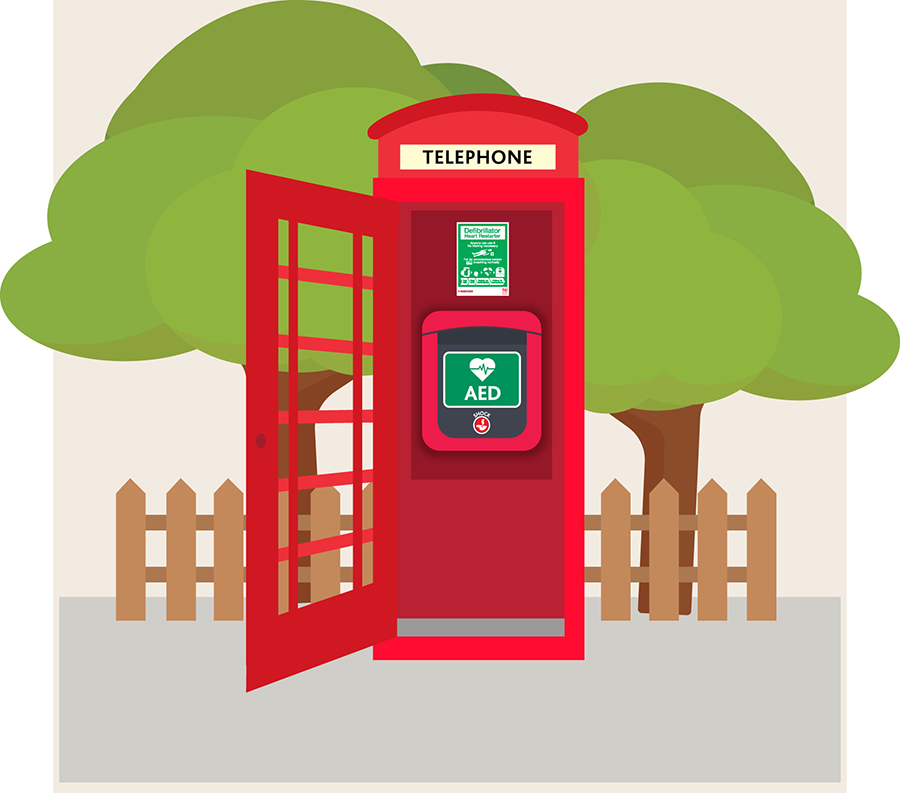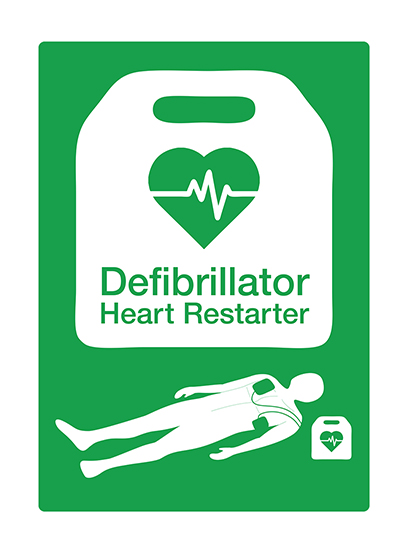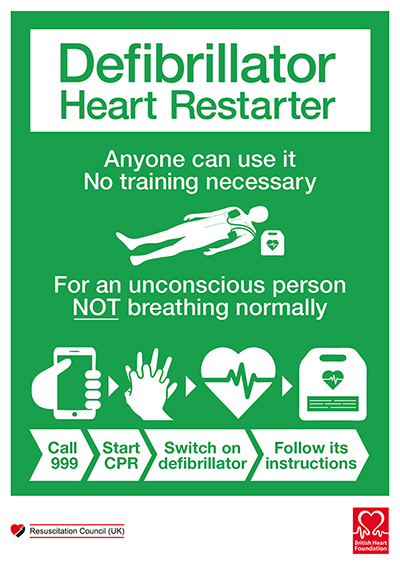Last Updated on 18/12/2023 by Sarah Sarsby
There are many brands of defibrillator available. While they may look different, all defibrillators are reasonably similar and will deliver a lifesaving shock in an emergency.
Defibrillators are known by several names, including:
Look out for the defibrillator sign in your workplace and public areas.

Semi-automatic defibrillators require the rescuer to press a button to deliver a shock. Fully automatic defibrillators carry out a short countdown and deliver a shock automatically. Both versions have pros and cons, depending upon where the defibrillator is to be used and by whom. Your ambulance service or a BHTA supplier will be able to offer advice to help you make the right choice.

There are many defibrillators available in public places such as train stations, shopping centres, airports, and leisure centres. These defibrillators are often known as PADs and are usually found in yellow or green cabinets if they are outdoors or a white cabinet if they are indoors. Whatever the colour, the cabinet will always have the defibrillator sign on it. Some cabinets need a code to open them; some cabinets are already unlocked. If you need to get into a cabinet that is locked, simply call 999 and they will give you the code. These are provided for the use of everyone in an emergency.
If you need to find your nearest PAD in an emergency, call 999 and the call handler will help you if there is one nearby.
Larger companies are likely to situate a defibrillator in the main reception or close to a first aid room. There are many places defibrillators can be found; remember to look for the sign.
The amount of time between arrest and defibrillation is one of the most important factors during a cardiac arrest.
Using a defibrillator within the first three minutes of collapse can increase the chances of survival by up to 70 percent. http://www.nejm.org/doi/full/10.1056/NEJMoa040566#t=article
Every minute after this reduces chances by approximately 10 percent. It is critically important to act quickly.
Some people mistakenly feel that they may be held responsible if the casualty does not recover. This is not the case; a person using a defibrillator cannot be held liable for trying to rescue a casualty.
http://www.legislation.gov.uk/ukpga/2015/3/contents/enacted

Defibrillators are designed to be used by anyone, with or without training.
A defibrillator will never deliver a shock unless the casualty needs one. Training is advisable but is not compulsory. Training will improve the user’s confidence in an emergency.

Most defibrillators can be accessed easily, without keys or codes. Some community defibrillators are protected by a locked cabinet. In this instance, instructions on how to open the cabinet in an emergency will be clearly shown.
Both visual and audible instructions will be given by the defibrillator. The instructions are simple to follow and clearly given.
All defibrillators are maintenance free.
Click here and search for “First Aid Medical Equipment” for further information on reputable brands, manufacturers, and suppliers.